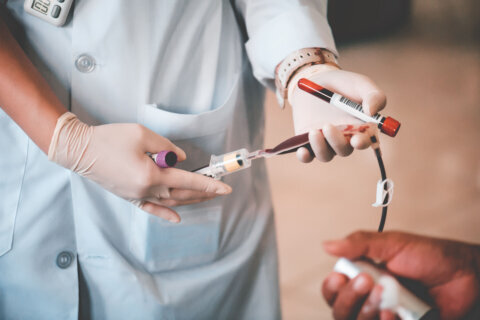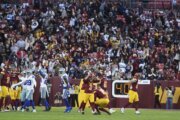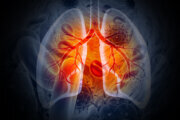The obesity epidemic and related rise in Type 2 diabetes has spurred public health awareness and parental concern. But another obesity-related health hazard is quietly putting kids at risk for liver damage, liver cancer , cirrhosis and, in advanced cases, the need for a liver transplant in adulthood. Known as nonalcoholic fatty liver disease, or NAFLD, it primarily occurs in overweight kids and is now the most common liver condition affecting children in the U.S.
[See: 10 Concerns Parents Have About Their Kids’ Health.]
Here’s what parents and pediatricians should consider about preventing and spotting nonalcoholic fatty liver disease:
It’s increasingly common. “Because of our epidemic in North America — particularly in the U.S. — of obesity, we’re seeing more and more children present with fatty infiltration of the liver,” says Dr. Daniel Podberesky, the radiologist-in-chief with Nemours Children’s Health System in Orlando, Florida. NAFLD affects up to 38 percent of obese children, with rates nearly tripled from the late 1980s, according to 2014 figures. Overall, Podberesky says, between 3 and 10 percent of kids in the U.S. have the condition.
NAFLD is strongly tied to obesity. Although fatty liver disease is not exclusive to obese kids, it “absolutely” increases with obesity rates, Podberesky says. And as body mass index, or BMI — a measurement taking height and weight into account — rises, so does proportional risk.
Race and ethnicity affect risk. Hispanic adolescents have four times the risk of developing NAFLD compared to white peers, according to the 2014 study, which also found white and Asian kids are at higher risk than African-American kids of becoming young patients.
Insulin resistance is thought to play a role. Insulin is a hormone that’s critical to controlling blood sugar levels in the body. As the body becomes increasingly resistant to insulin, it’s less able to process dietary fat, meaning cells retain more fat. Insulin resistance is tied to abdominal obesity, with fat accumulating around organs including the liver. Type 2 diabetes, obesity, insulin resistance and NAFLD all appear to be interconnected in ways that are still being researched.
Damage is similar to that of alcohol. Nonalcoholic fatty liver disease may sound like an odd name for a condition affecting some kids who are still in elementary school. “In the adult population, the vast majority of adults that have fatty liver disease get it secondary to alcohol abuse,” Podberesky says. While the cause is much different in NAFLD, the health consequences are unfortunately similar in patients suffering from both forms of the disease.
The liver may become scarred and inflamed. Whether liver damage comes after decades of hard drinking in adults, or several years of overeating and a sedentary lifestyle in kids, results under the microscope look the same. Outward symptoms usually don’t show up in early stages of NAFLD. However, as more fat infiltrates the liver, patients can develop a more serious condition called nonalcoholic steatohepatitis, or NASH. With NASH, inflammation occurs in the liver, along with scarring.
Abdominal pain is often the first sign. A “stomachache” may be the first outward sign of NAFLD in young patients. During the physical exam, the doctor may pick up enlargement of the liver or spleen. When blood tests including liver enzymes are done, levels are abnormally high. Diabetes-related blood tests also may reveal abnormalities that cause doctors to suspect NAFLD.
[See: 10 Seemingly Innocent Symptoms You Shouldn’t Ignore.]
Pediatricians should screen for NAFLD. In February, new guidelines for NAFLD screening and clinical care appeared in the Journal of Pediatric Gastroenterology and Nutrition. By ages 9 to 11, or sometimes younger, kids whose BMI is in the 85 th percentile or above should be screened, according to the guidelines. Screening is indicated even more if kids have other risk factors including abdominal fat, insulin resistance, diabetes, sleep apnea or family history of either NAFLD or NASH. Pediatricians or family doctors may refer kids to children’s hospitals with NAFLD-focused programs.
Imaging tests help diagnose nonalcoholic fatty liver disease. If doctors suspect a child has NAFLD, the child will have an imaging test. This could be a routine ultrasound, a CT scan or magnetic resonance imaging, or MRI. Imaging tests for NFALD are evolving. Transient elastography is an advanced form of ultrasound that measures liver stiffness — a sign of scarring.
Liver biopsy might be needed. In some cases, children with suspected NALFD undergo a liver biopsy. The test requires a long needle, which is inserted through the wall of the abdomen and into the liver to obtain a tissue sample, which is analyzed for signs of scarring and inflammation. Liver biopsy is considered the gold standard for diagnosis, but it’s invasive and can be painful. A few pediatric centers like Nemours offer magnetic resonance elastography, which uses magnetic resonance imaging combined with sound waves to reveal the amount of fat in the liver, pinpoint areas of liver inflammation and stiffness, and diagnose and track NALFD in a noninvasive, more precise way.
Treatment is all about lifestyle. Healthy diet and physical activity — leading to weight loss — is the only way to reverse fatty liver disease. Unlike obese adults with NAFLD, kids don’t have weight-loss surgery as a recommended option, says Dr. Sylvie Lebel, director of pediatric liver transplant at Phoenix Children’s Hospital, which offers a specialized clinic for pediatric NAFLD.
Early detection gives kids a better chance. Kids diagnosed with NAFLD at a young age are more likely to do well, Lebel says. They are often referred to specialists: typically either pediatric gastroenterologists or pediatric hepatologists, whose focus is liver disease. “The types of referrals we like to see are [children] who are pre-pubertal and whose parents are motivated to enroll in a weigh-management clinic,” Lebel says. On the other hand, she says, a 17-year-old with limited access to healthy food or a structured weight-loss program could be headed for disease progression and irreversible cirrhosis.
Parents play an important role. For NAFLD/NASH treatment to succeed, families need to be on board. That can be challenging, Lebel says. For some parents, the initial reaction to the diagnosis of this potentially life-threatening disease is disbelief and the response that their child is “just a little chubby.” Other parents really struggle with weight management themselves. “Unless the whole family addresses lifestyle and dietary changes, kids will not lose weight,” she says. In general, she adds, parents must play a bigger role in educating their kids about good nutrition.
[See: 10 Myths About Diabetes.]
The liver can heal. Evidence is growing that when children eat a healthier diet and consume fewer calories, exercise more and sit less, the liver can actually heal itself, Podberesky says. Studies around the elastography exams, he says, appear to show that as kids with NAFLD lead healthier lifestyles, the liver stiffness gradually decreases — a sign that their condition is improving.
More from U.S. News
10 of the Biggest Health Threats Facing Your Kids This School Year
12 Questions You Should Ask Your Kids at Dinner
8 Weird Ways Obesity Makes You Sick
Fatty Liver Disease Is a Growing Problem for U.S. Kids originally appeared on usnews.com







